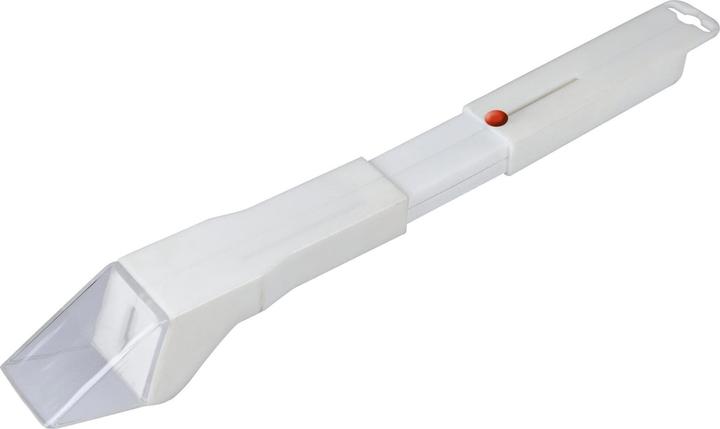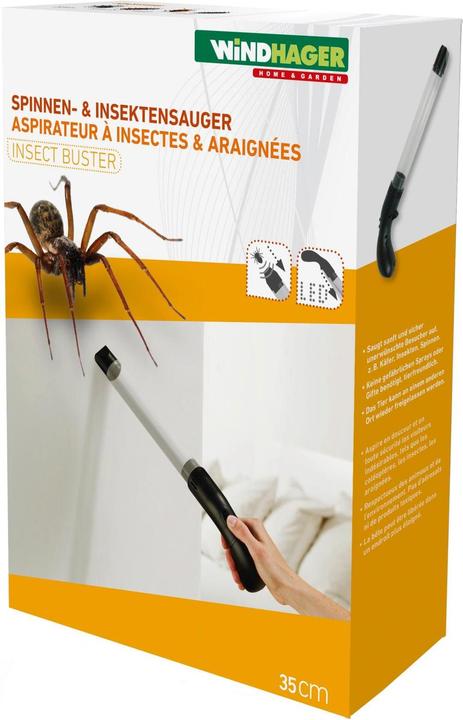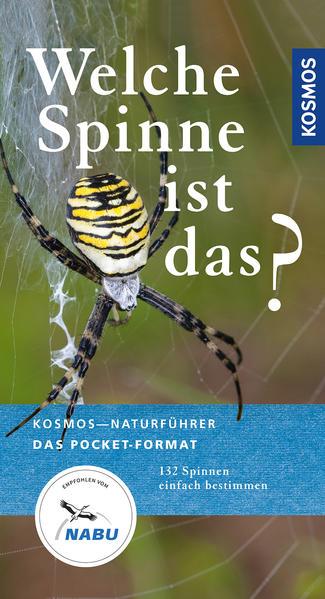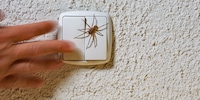

Do you vacuum spiders? Please, don’t!
Spiders are bound to stray into your living room. Vacuuming them up is almost certain to kill them – which is why you should use other methods to get them back outside.
They say having a spider in your home is a sign of good indoor climate; the eight-legged creatures supposedly enjoy good air. As such, their presence is evidence that the air is not too dry and that it’s free of pollutants.
Still, there are probably far more spiders living in damp basements than in lofts and duplexes. For one, they’ll find more to eat there. And they run a lower risk of dying from dehydration due to dry indoor air. Any spiders in your living room probably just got lost, having fled from the cold outside to another life-threatening location.
After all, there tends to be at least one person in each household who’s rather opposed to having a spider as a roomie. So, how do you best get the little bugger out of your home?
Method 1: vacuum cleaner
If you’re one of those people who descends into utter panic upon sighting a creepy-crawly that’s but a few centimetres in size, you may be glad to take up the fight from a safe distance. Long vacuum cleaner tubes are probably the weapon of choice: point it in the direction of your opponent, press «on», problem solved. Or is it? I have some friends who fear the spider might climb back out of the vacuum cleaner in a rage and go on the prowl for its tormentor.
Good news for you – and very bad news for the spider: most modern vacuum cleaners have a hygiene valve that snaps shut when not in use. This mechanism exists to prevent dirt from falling out once it’s been sucked in. Mind you, it’s not necessary in the case of a spider anyway. As a spider, being vacuumed means an almost certain and agonising death. The airflow accelerates its body to well over 100 kilometres per hour. Depending on the vacuum cleaner, the arachnid’s journey ends with it slamming into the plastic wall of the collection container. And so it dies. The alternative, a bagged vacuum, doesn’t significantly increase a spider’s chances of survival. Even if it may land against a softer wall, small particles continue to be shot into the bag. Each of these projectiles can be fatal to the spider.
Here’s the thing: most spiders don’t even make it to the dust bin alive. Long curved hoses in particular kill spiders, as they’re repeatedly thrown against the walls of the hose. Just about any larger eight-legged beastie will die here.
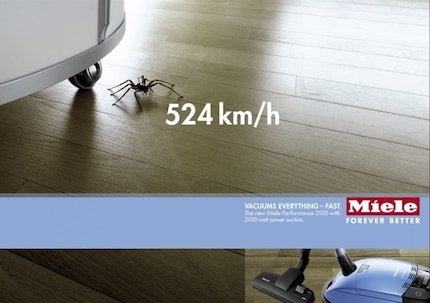
The bottom line is spiders are useful animals. You shouldn’t vacuum – and, in the process, kill – them. So, what can you do if you want them out of your place?
Method 2: carry it out of your home
Admittedly, this is quite the challenging suggestion for an arachnophobe. But it’s better for the environment and your conscience. If you don’t want the spider in your home, you should catch it and carry it outside. That way, it can play its important role in the ecosystem.
However, it’s best not to set it free right in front of your house or patio door; find a place at least 30 metres away. Spiders have a pretty good sense of direction and can easily find their way back to the warm indoors.
Alright. That’s all nice and well, but how are you supposed to catch the sucker? Here are three proven methods requiring varying degrees of courage.
The hand capture
If you know no fear (and why should you?) and have no tools at hand, you can carefully manoeuvre the spider with one hand onto the palm of the other. Cup your hand and carry the spider outside.
The glass and carton coup
You’ll need to get quite close here, too, but no skin-to-spider contact is required. Find a jar with an opening large enough to easily fit over the spider and make sure not to squeeze its legs. Once you’ve covered the spider with the jar, carefully and slowly slide a cardboard underneath to close off the opening. Bam! The spider’s in the jar, and all you need to do is bring it outdoors. Pro tip: have a piece of cardboard or sturdy paper handy before you grab the jar. Or have a second person nearby who can hand it to you.
The gadget grab
This third option is good for the spider, your blood pressure and Galaxus’ sales: gadgets made specifically for trapping creepy-crawlies. In principle, they work like the glass jar and cardboard, but cost a bit more.
If you now feel like learning more about spiders – and practising your German in the process – here are three book recommendations. Diana Amft’s children’s books about the little «Spinne Widerlich» (disgusting spider) caused a surge of sympathy for the eight-legged beings in my own household. At least temporarily. Then there are the highly amusing kids’ books by Kai Pannen, which feature the hardships of a fat and somewhat lethargic garden spider named Karlheinz and his friend Bisi, the house fly. As an adult, you’ll have fun reading these books aloud, too.
The Kosmos publishing house offers nature handbooks for beginners. They serve as easy-to-use reference books you can consult to identify the species of any spider you encounter at home.
P.S.: No animals were harmed in the research of this article. All statements are based on scientific studies that investigated the killing of spiders in vacuum cleaners.
P.P.S.: If you’re reading this article in Germany, Austria, France or Italy, the links to the book recommendations will, unfortunately, lead to an error page. Books are not (yet) available outside Switzerland. Sorry about that.
Header image: Shutterstock
Journalist since 1997. Stopovers in Franconia (or the Franken region), Lake Constance, Obwalden, Nidwalden and Zurich. Father since 2014. Expert in editorial organisation and motivation. Focus on sustainability, home office tools, beautiful things for the home, creative toys and sports equipment.
Practical solutions for everyday problems with technology, household hacks and much more.
Show all